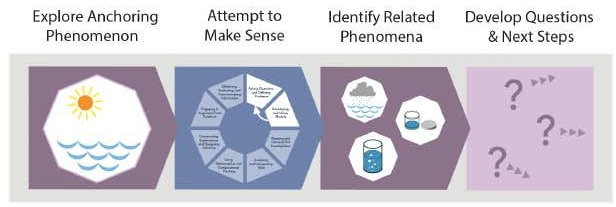Blog Post Sections
- Announcing Dihybrid Inheritance Study Teaching Tool
- Study and Resource Overview
- Dihybrid Inheritance versus Monohybrid Inheritance Patterns: Which to Choose?
- Identifying Traits Rosette-Dwarf and Anthocyaninless (Non-Purple)
- Study Timeline
- Learn More and Access Resources
Announcing Dihybrid Inheritance Study Teaching Tool
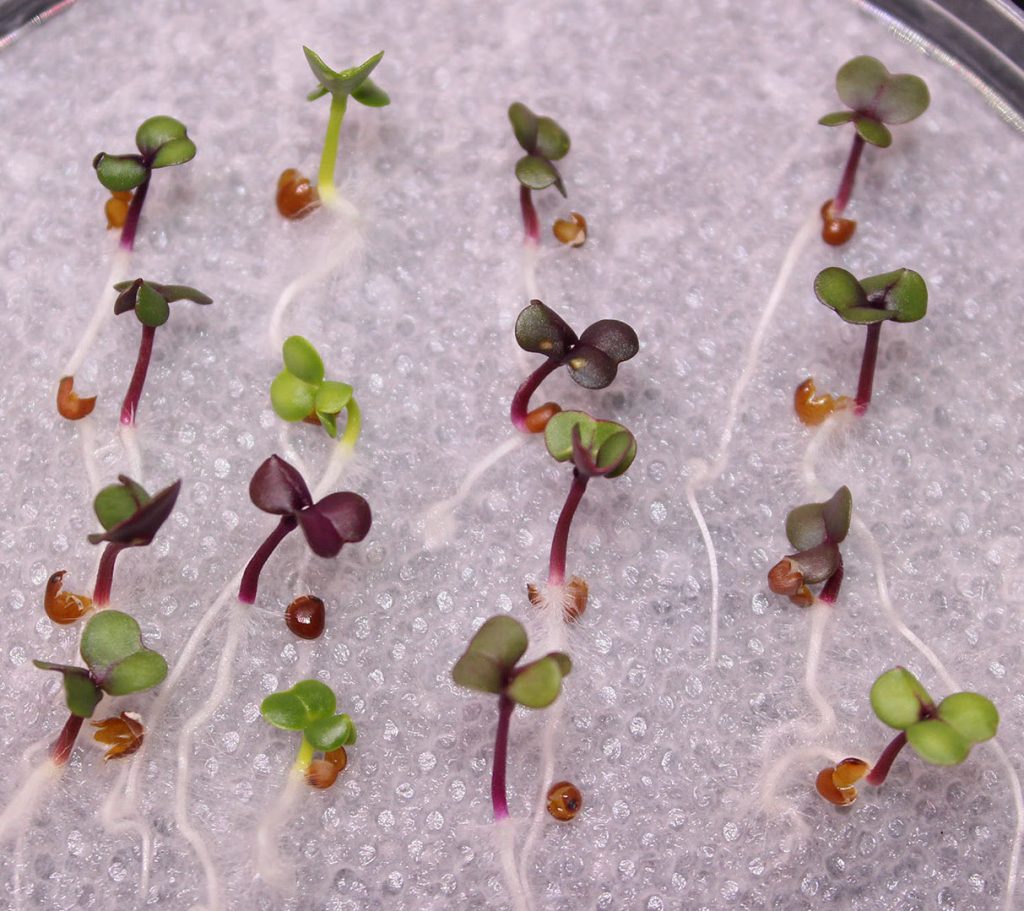
The Wisconsin Fast Plants team is proud to announce the release of a set of resources to support teaching and learning about Dihybrid Inheritance patterns. These resources include an implementation calendar, setup guide handouts, and phenotype guide slideshows including classroom discussion prompts. You can access all of the Dihybrid Inheritance Study resources here. This blog post provides an overview of study and background information to support educators using these resources in their classroom.
Study and Resource Overview
Dihybrid inheritance patterns that are easily observed offer powerful evidence for explaining concepts of reproduction, variation, genetics, selection, and more. Whatever your specific learning goals or pedagogical approach, using genetic stocks of Fast Plants that are germinated in Petri dishes is an easy strategy for directly observing three generations of inheritance in less than two weeks. In support of any investigation implemented with dihybrid Fast Plants, this Dihybrid Inheritance Study is intended as a tool filled with helpful resources and tips.
Specifically, this Dihybrid Inheritance Study Using Wisconsin Fast Plants references investigations involving a cross of the recessive Rosette-dwarf and Non-Purple Stem lines of Fast Plants. One recessive allele, Rosette-dwarf (ros), is a mutation that affects how Fast Plants produce gibberellic acid (a growth and development hormone). A second recessive allele for a different gene can inhibit Fast Plants from producing the purple pigment Anthocyanin. In other words, the allele called Anthocyaninless (anl), when homozygous (anl/anl) causes Fast Plants to be entirely non-purple.
Dihybrid Inheritance versus Monohybrid Inheritance Patterns
We use inheritance models that students can observe firsthand–with Wisconsin Fast Plants as a model organism–to create opportunities for deep learning about genetics. Our intention in doing this is for students to build conceptual understanding and engage in meaningful scientific practices. Wisconsin Fast Plant seed stocks offer both mono- and dihybrid inheritance options for teaching genetics. So, what is the advantage of a monohybrid or a dihybrid inheritance pattern? Simply put, we can choose to use mono- vs. dihybrid inheritance patterns depending on the pattern complexity we want students to explain.
Which to Choose?
Monohybrid, dominant/recessive allele inheritance patterns are great for yielding evidence similar to what Mendell used to make profound genetic inferences. However, students with prior genetics learning experiences may easily recognize the typical 3:1 monohybrid phenotypic ratio. Choosing to use a dihybrid inheritance pattern as the phenomenon to be explained can be an effective strategy for engaging students in more rigorous scientific practices. Dihybrid inheritance patterns can be useful for challenging students to more purposefully make sense of the underlying genetics processes as well as incorporating multiple science practices for genuine 3-D learning (contact us and mention this blog to learn more about incorporating Next Generation Science Standards).
Identifying Traits
Rosette-Dwarf
Gibberellic acid is a plant hormone that regulates plant development, including seed dormancy and maturation to flowering. Gibberellic acid (GA) also affects leaf size and plant stature, including elongation of the hypocotyl, stem internodes, and leaf petioles.
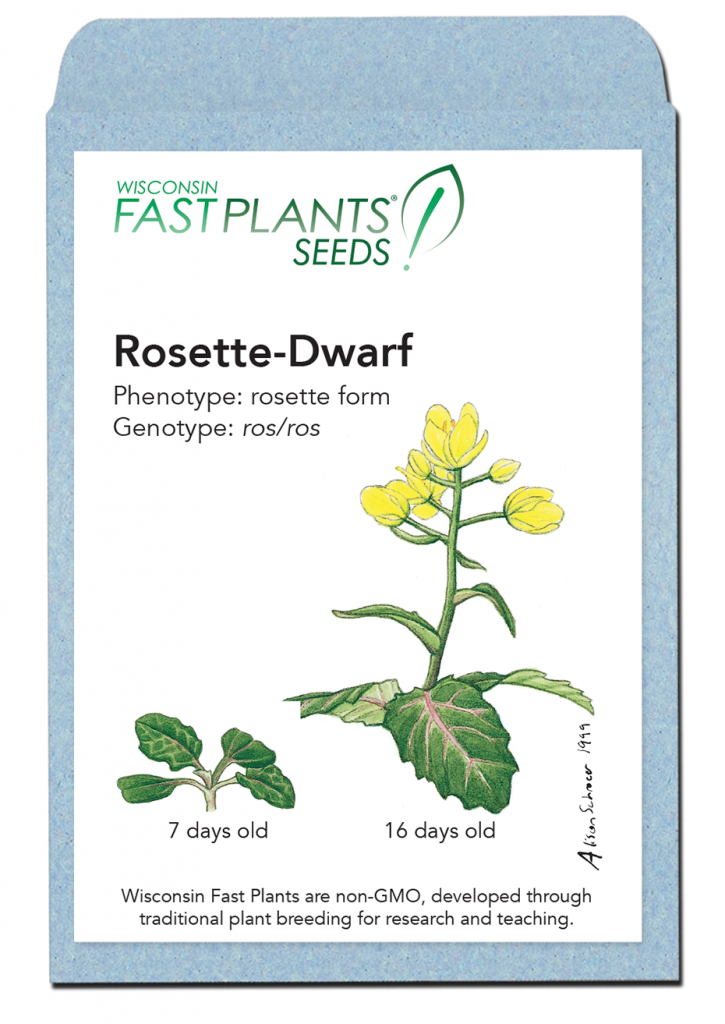
The rosette-dwarf gene (ros) in Wisconsin Fast Plants modifies the production of gibberellic acid by interrupting the biological pathway responsible for synthesizing GA. In plants with the homozygous recessive genotype (ros/ros), gibberellic acid production is significantly reduced, to about 10-25% of the levels found in standard, wild type Fast Plants. Reduced GA production causes delayed germination and flowering; it also causes significantly reduced hypocotyl and stem internode growth, resulting in a squat plant form with leaves that remain near the soil level. Plants with the heterozygous (ros/ROS) or wild-type, homozygous dominant (ROS/ROS) genotypes, produce gibberellic acid at standard levels and plants develop normally.
Anthocyaninless (Non-Purple)
Anthocyanin is a purple pigment present in many plants. For Fast Plants grown in soil, anthocyanin is best observed when plants are 4-10 days old. For Fast Plants’ seeds germinated in Petri dishes, anthocyanin is best observed when plants are 3-7 days old. Anthocyanin expression is observable on the stems and hypocotyls, under the cotyledons, and on the margins of leaves.
The anthocyaninless gene (anl) in Wisconsin Fast Plants regulates whether or not purple anthocyanin pigments will be expressed by interrupting the biological pathway responsible for synthesizing anthocyanin pigments. In plants with the homozygous recessive genotype (anl/anl), anthocyanin expression is completely suppressed. This causes plants to appear a bright green color (this is the “Non-Purple Stem” or anthocyaninless phenotype). Plants with the heterozygous (anl/ANL) or wild-type, homozygous dominant (ANL/ANL) genotypes, express anthocyanin at varying levels (this is the “Purple Stem” phenotype). In anthocyanin expressing plants, any presence of purple pigment (even if only a faint shade of purple) is considered the Purple Stem phenotype.
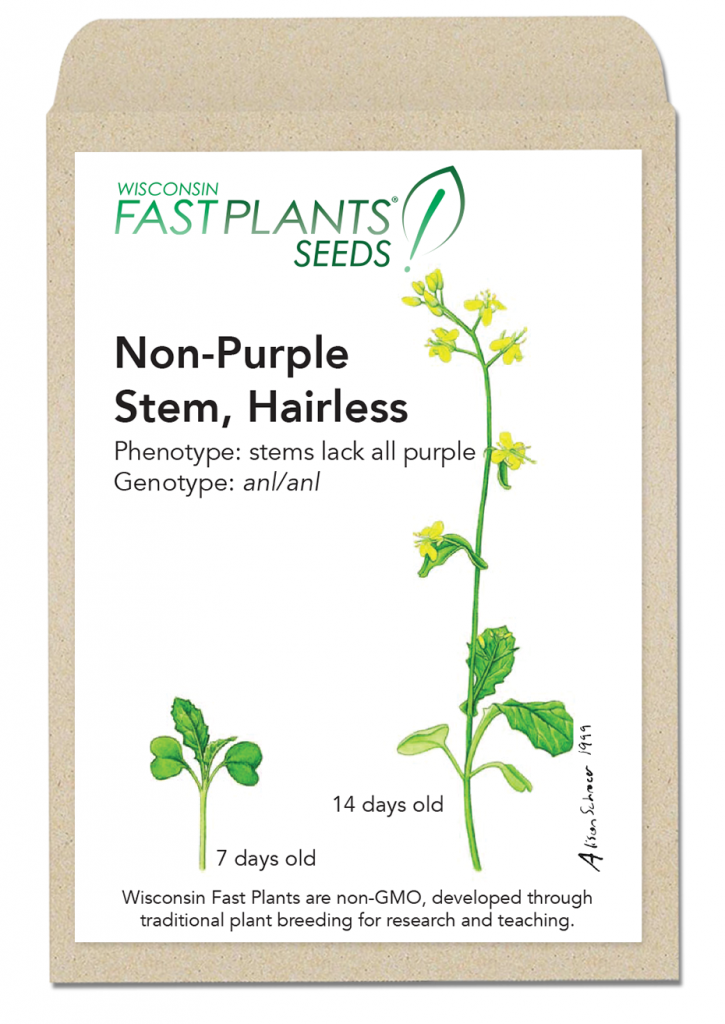
Dihybrid Inheritance Study Timeline
Using genetic stocks of Fast Plants that are germinated in Petri dishes is an easy strategy for directly observing three generations of inheritance in less than two weeks!
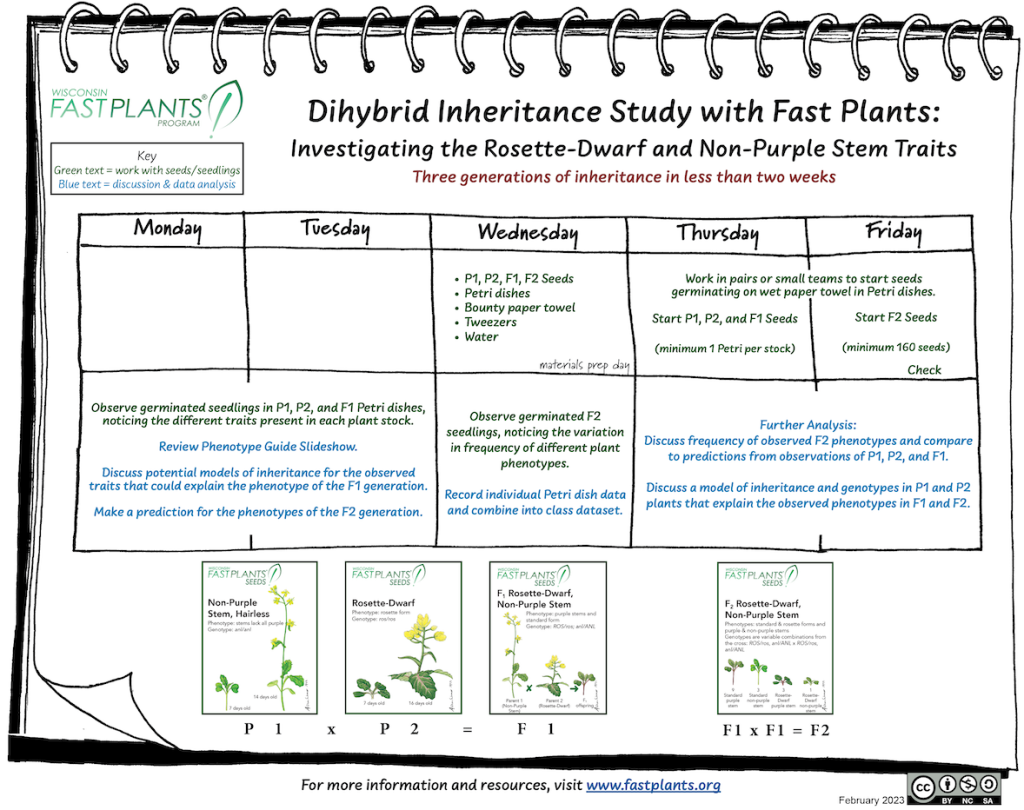
Learn More and Access Dihybrid Inheritance Resources
Learn more about the Wisconsin Fast Plants stocks used in this study, the recommended environmental conditions for seed germination, Petri dish setup in your classroom, and study extensions by accessing our growing Open Source resources drive. You can access all of the Dihybrid Inheritance Study educator resources here (links to a Google Drive folder).

